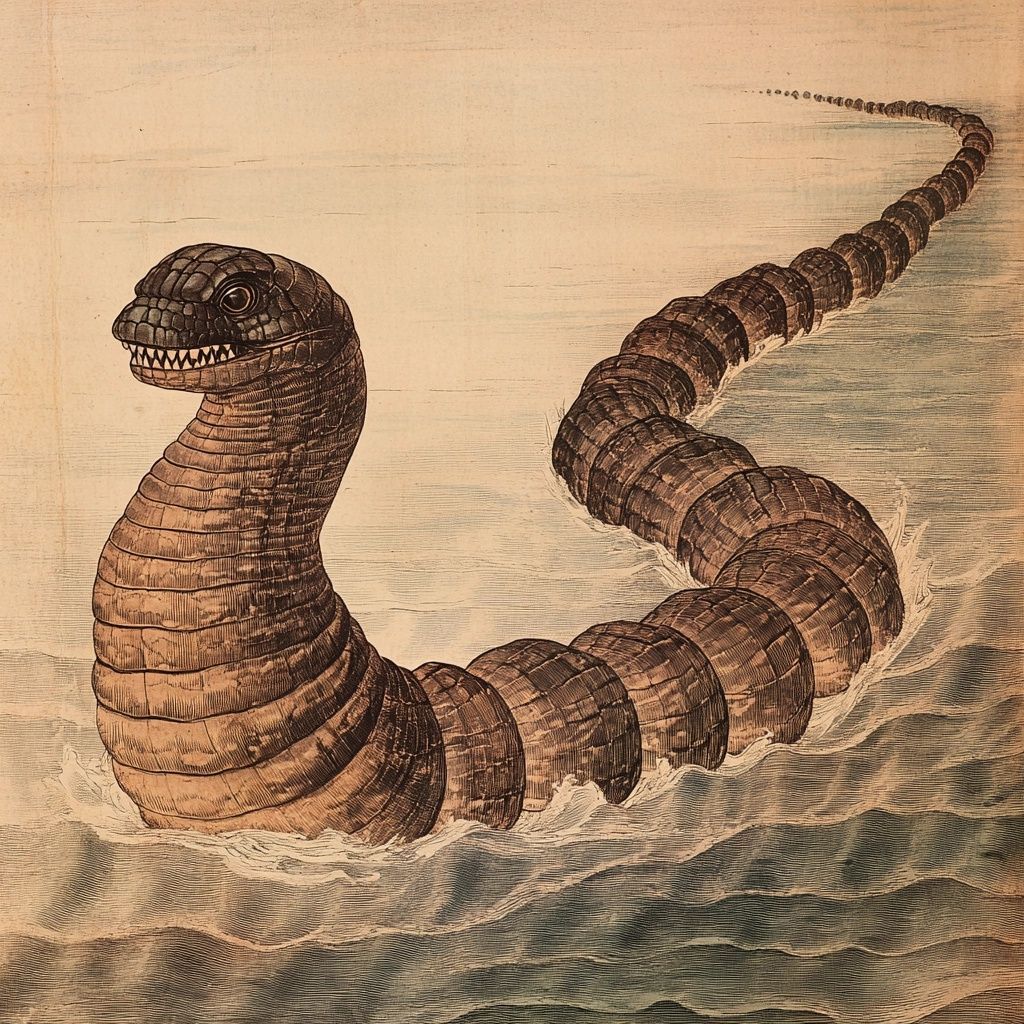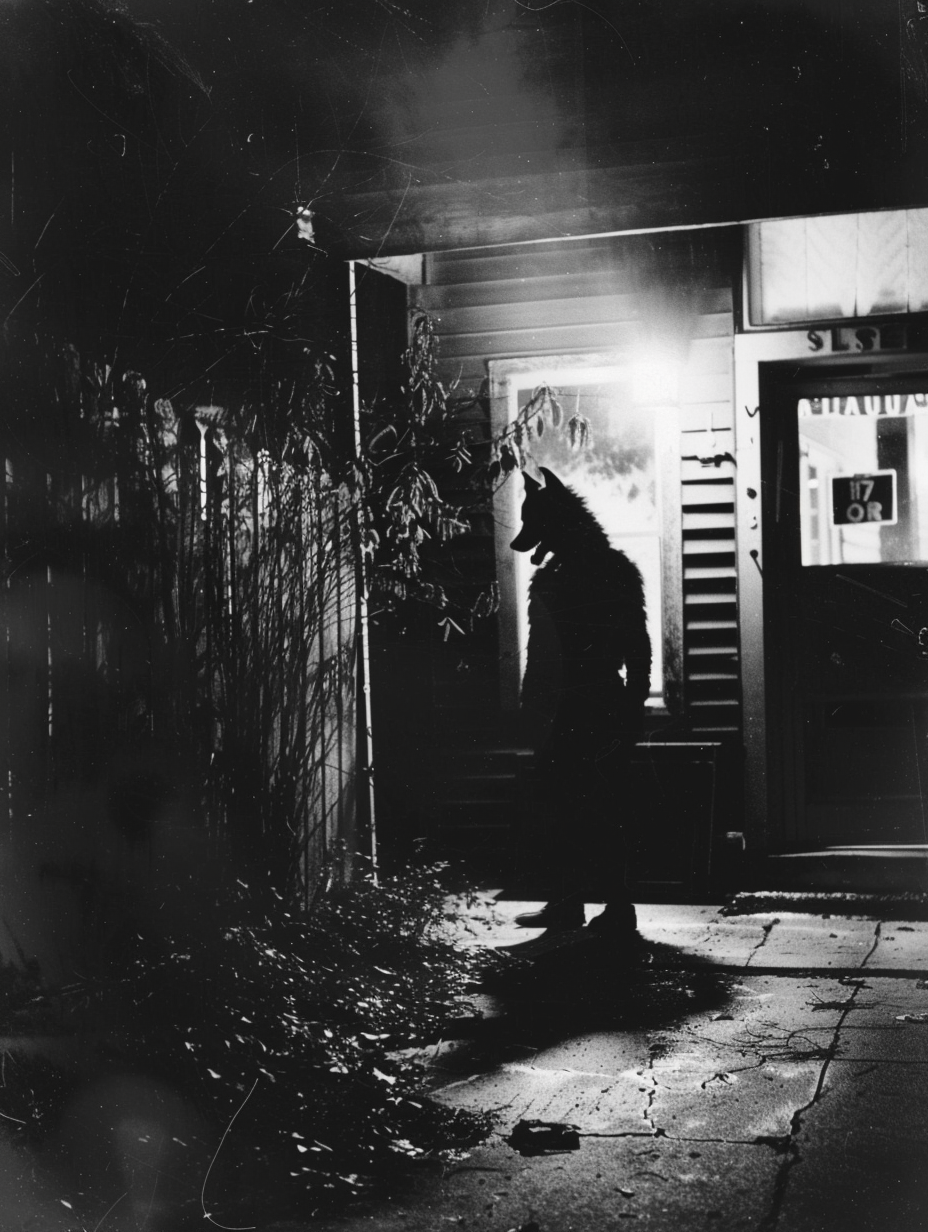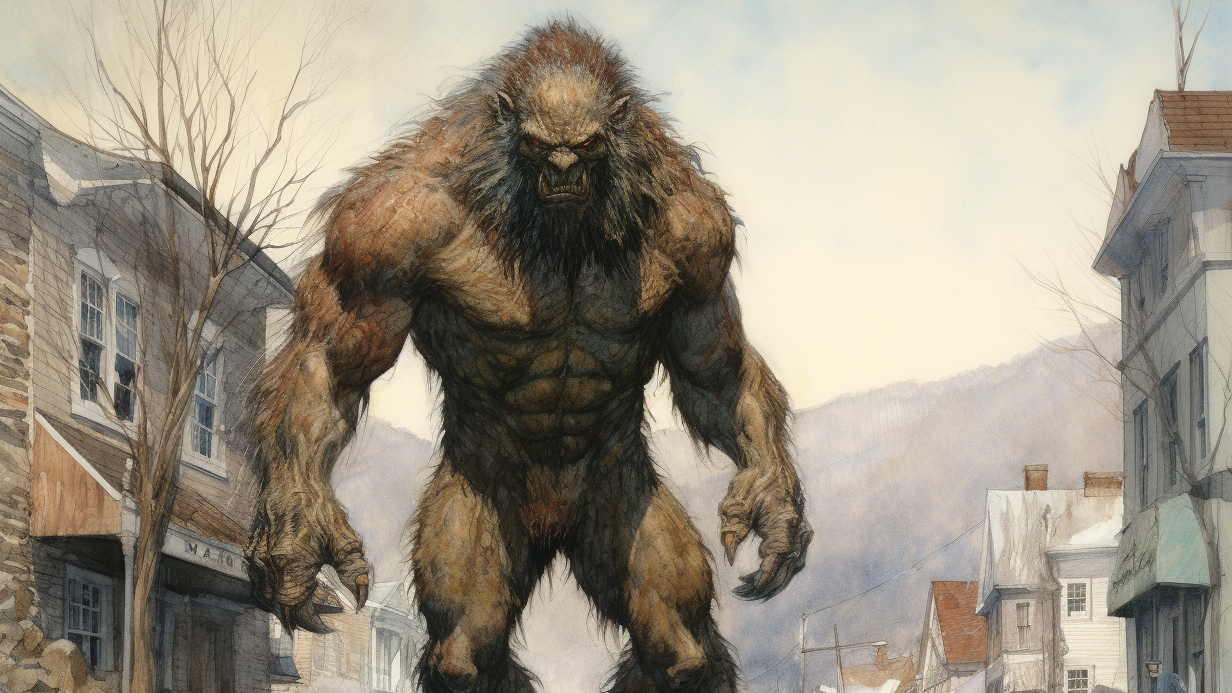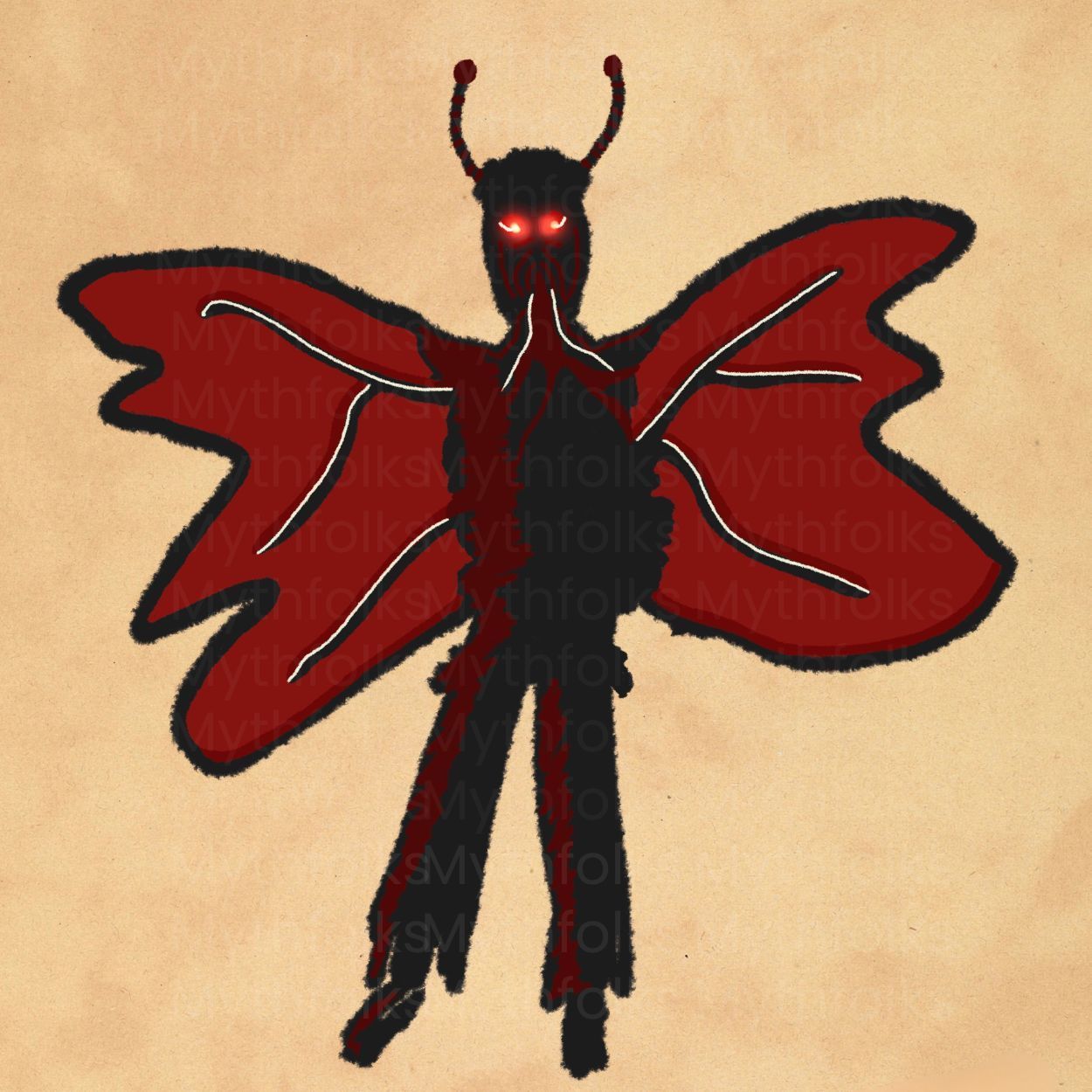The USA is full of stories about mysterious water cryptids and Champ is one of the slightly better known ones.
Champ is a legendary lake monster said to inhabit Lake Champlain (which separates Vermont from New York and stretches roughly 120 miles south from just beyond the Canadian border).
Is it plausible that a formally unidentified monster lies beneath the surface?
Let’s take a look.
Key Facts at a glance:
Mythology:
USA/Canada, Vermont, New York, Quebec (Lake Champlain region)
Folklore type:
Legends
Creature type:
Cryptid, Sea Serpent
Also called:
Chaousarou, Tatoskok
First recorded sighting:
1609, Lake Champlain (it was noted that indigenous locals already referred to the creature as Chaousarou)
Most famous sighting:
1977, St Albans, Vermont
Estimated length:
15-50 feet
Distinctive feature:
Snake or horse like head, sometimes with horns and a mane
Witnesses:
Dozens of reports spanning 5 centuries
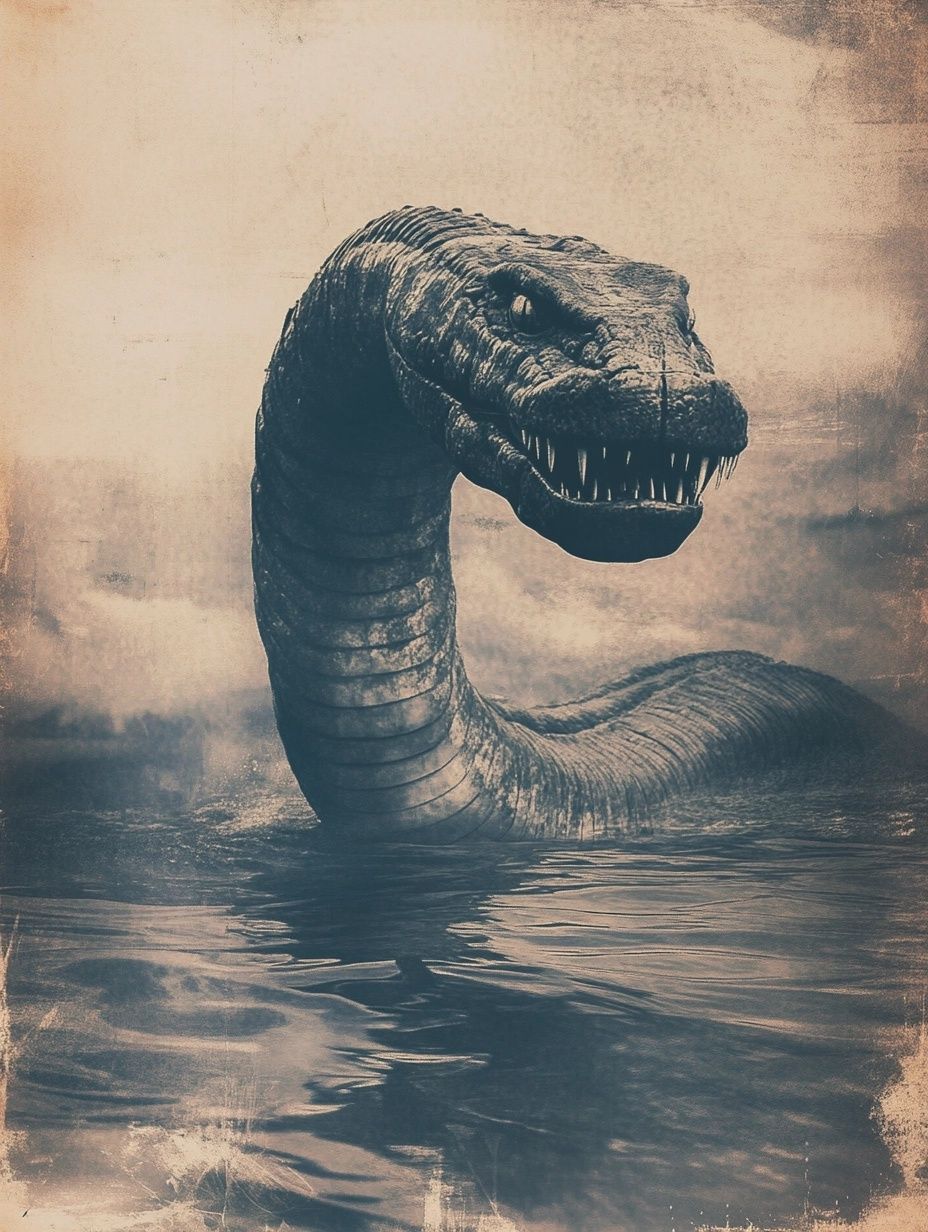
Physical appearance and characteristics
Reports of what Champ looks like seem to have evolved quite a bit from earlier sightings through the later part of the 20th century.
In earlier 19th century descriptions, Champ was often described as a serpent-like creature but with more fish-like characteristics. It had a long neck, hooded, fiery eyes, glistening scales, a fish-like tail and a spout, similar to a whale.
But from the mid 20th century, the reported descriptions started to more closely resemble those of the Loch Ness monster and Champ has typically been described since as:
- Between 15-50 feet in length with an upright neck 4-5 feet long
- Most commonly seen with 2-3 humps (with variations from 1-10)
- Having dark brown or black, rough skin
- Having a snake or horse-like head, sometimes with horns or ears and a mane
- Baring visible teeth
- Rising out of the water up to 8 feet
Champ was also reported to leave a clearly visible wake, often appearing aggressive and vocal. However, the noise from boat motors seems to scare it off.
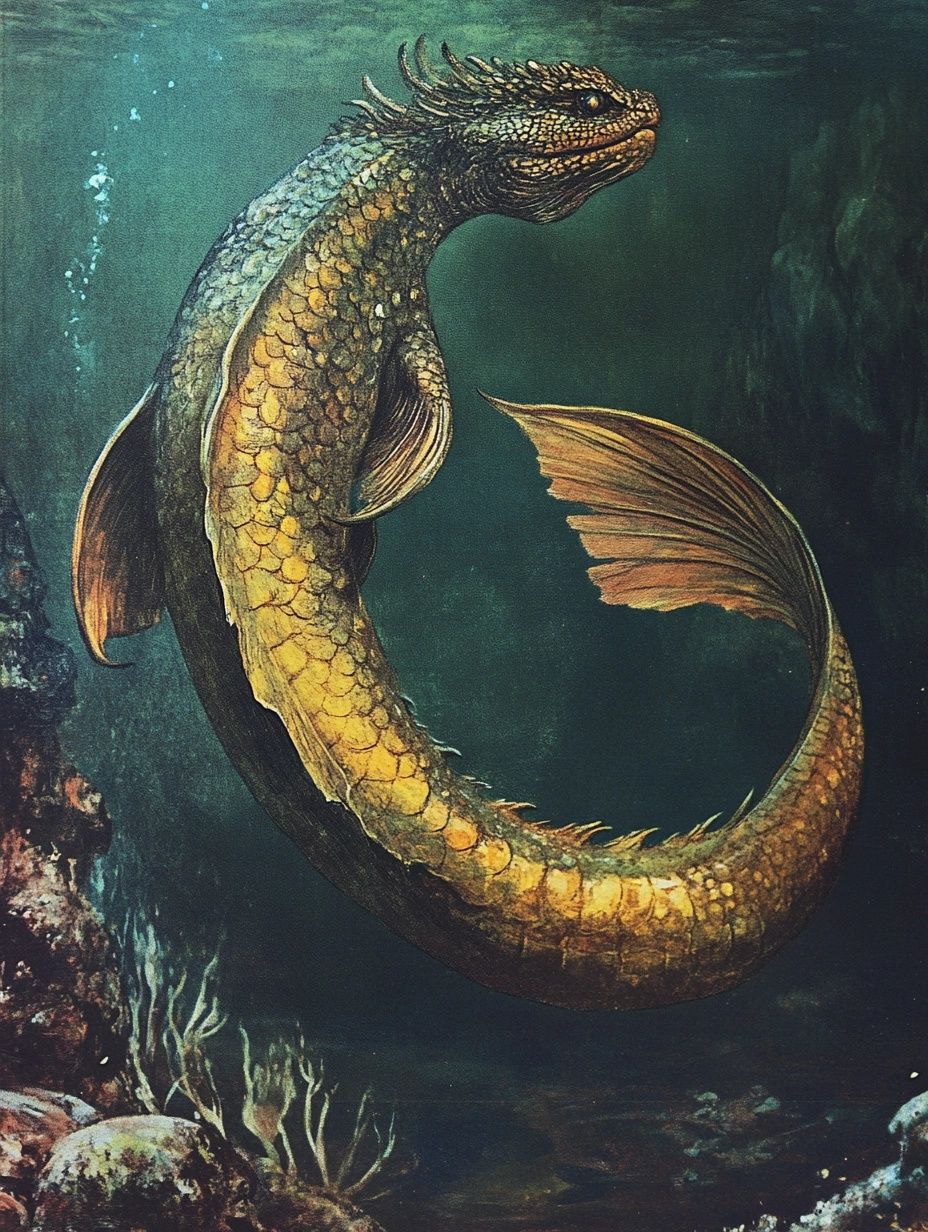
A timeline of sightings and eyewitness reports (1609 - 2000s)
19th century and before:
1609: The first recorded sighting - French explorer Samuel de Champlain reportedly saw a large serpent-like creature in Lake Champlain. He described it as having a horse-shaped head, with a body covered in tough, armored scales. De Champlain also commented that local indigenous tribes mentioned sighting the same or a similar creature.
1819: A questionable sighting - a Captain Crum claimed to see a serpent over 180 feet long in Bulwagga Bay, New York. He described the creature as having a head resembling a seahorse and silvery scales.
July 1873: In early July 1873, a crew laying tracks for the New York & Canada Railroad near Dresden, New York, reported seeing a serpent with a massive head approaching from across the lake.
A few days later, additional witnesses reported seeing the creature, and some farmers even mentioned missing livestock.
August 1873: On August 9, a group of monster hunters, organized by the Whitehall Times, claimed to have trapped the serpent in Axehelve Bay and shot at it from a steamboat named Molyneaux, but no further evidence of the creature materialized.
September 1873: Later, on September 7, railway workers, motivated by a $50,000 reward offered by the famous P.T. Barnum for Champ’s carcass*, thought they had found the creature’s remains - only to discover it was just a log.
August 30, 1878: Six people on board the yacht Rob Roy, saw a "large monster swimming rapidly by" off Button Bay Island
November 5, 1879: three students from Burlington University saw a monster moving gliding through the water from Appletree Point, around Rock Dunder
July 1883: Sheriff Nathan H. Mooney reported seeing a 25-35 foot long serpent with a flat, triangular head in Cumberland Bay, New York.
*the PT Barnum offer of a $50,000 reward for the remains of Champ would last 30 years until 1900 and ultimately go unclaimed...
20th century and beyond:
1915: a 40 ft water monster was said to be seen thrashing about after it got stuck in the shallow entrance of Bulwagga Bay
1945: Couple Charles Langlois and his wife, apparently came close to a serpent like creature in their rowboat while out in their hometown of Rutland, Vermont.
1976: A man called Orville Wells supposedly witnessed a 20ft long animal with a long neck and two humps in Treadwell Bay, New York.
July 5, 1977: Sandra Mansi took a famous photograph of a dinosaur-like creature near St. Albans, Vermont. This image remains one of the most well-known pieces of evidence for Champ's existence. The photograph shows a long neck and a small head rising out of the water.
1979: Jim Kennard and Joseph Zarzynski used sonar to detect a large object in the water near Whallon Bay, New York. The object was moving at a depth of 175 feet (but a school of fishes was not ruled out as the possible culprit).
July 1984: Michael Shea and about sixty people aboard the Spirit of Ethan Allen observed a 30ft creature in the water near Burlington, Vermont.
2000: Dennis Jay Hall reported observing two long-necked creature south of Otter Creek, Vermont for about 45 minutes. Hall described the creature as having visible segments along its neck and a horse-like head.
Popular theories and skeptical explanations about Champ
Cryptid believers: Many cryptozoologists and enthusiasts are convinced that Champ is leftover from the prehistoric era, potentially a plesiosaur or a similar aquatic dinosaur that has survived for millions of years.
Some theorize that Champ could be a tanystropheus, an extinct reptile with a long neck, or a zeuglodon, a type of primitive whale that was meant to have become extinct some 20 million years ago.
Skeptical explanations: Skeptics argue that many sightings could be attributed to large fish species, such as sturgeon, which can grow up to 7 feet long and have ridged, rough bodies that might be mistaken for a serpent.
Other potential explanations include floating logs, wave patterns or even deer swimming across the lake.
Scientists have also pointed to the possibility of optical illusions and misinterpretations of natural phenomena as causes for the Champ sightings.
Environmental factors: Lake Champlain’s size and geography contribute to the mystery.
The lake is approximately 120 miles long, with numerous inlets and a maximum depth of 400 feet, which could easily conceal a large creature or make it appear as if something unknown is lurking beneath the surface.
Wave formations, floating organic debris and underwater currents may also lead to the illusion of a creature moving through the water.

Similar water cryptids
Water-serpent creature sightings are especially rampant in Europe, the US and Canada, here are a couple of others to check out:
- Cadborosaurus, a reported creature from the Pacific Northwest first spotted in 1791
"“[It was a] 20-foot serpent, thick as a barrel and a head like a horse”"
— Samuel de Champlain, French explorer, describing "Champ" the cryptid in 1609
EYEWITNESS TESTIMONY
Champ has become an iconic cryptid figure in the Lake Champlain region, celebrated in local festivals and embraced as a symbol of Vermont. The town of Port Henry, New York, has even declared itself the "Home of Champ" and erected a statue in honor of the cryptid.
I always find unknown water-based creatures especially interesting because it’s so plausible that there really could be something hiding way out of our reach. And there’s a reason I find it difficult to get more than my toes wet in freshwater…
But I find it equally plausible that eye witness accounts could confuse the obvious with something deeper.
Either way, I love reading and sharing - see more
cryptid stories below.
Article sources
- Coleman, Loren, and Jerome Clark. Cryptozoology A To Z: The Encyclopedia Of Loch Monsters Sasquatch Chupacabras And Other Authentic M. Simon and Schuster, 1999.
- Fee, Christopher R., and Jeffrey B. Webb, eds. American Myths, Legends, and Tall Tales: An Encyclopedia of American Folklore [3 volumes]. Bloomsbury Publishing USA, 2016.
- Eberhart, George M. Mysterious Creatures: A Guide to Cryptozoology. Santa Barbara, Calif.: ABC-CLIO, 2002



